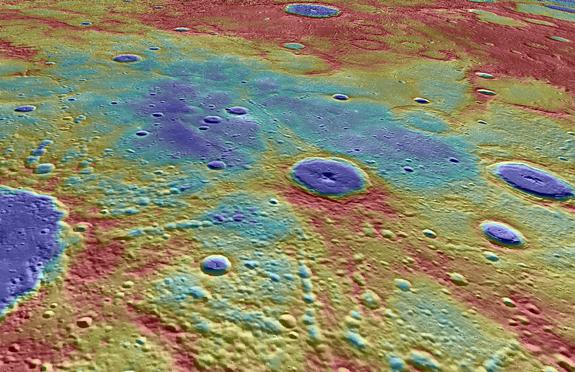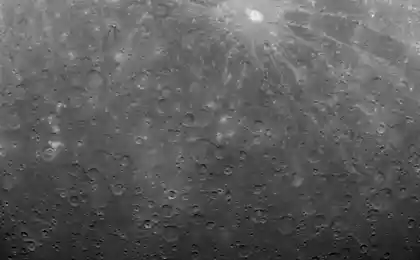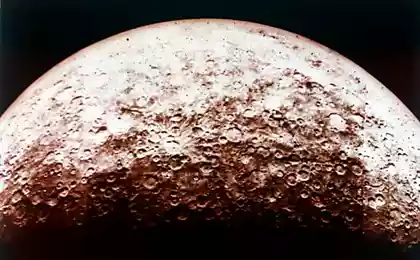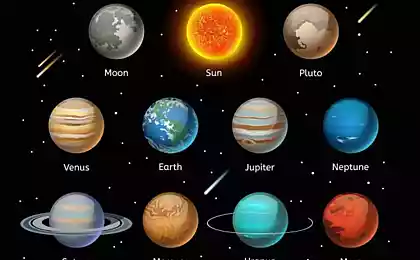731
Mercury's magnetic field has existed for billions of years

NASA / Johns Hopkins University Applied Physics Laboratory / Carnegie Institution of Washington i>
Examining data from the recently fallen onto the surface of Mercury apparatus MESSENGER, scientists from the University of British Columbia established , that the planet's magnetic field has existed for billions of years. And once, most likely, it was just as strong as the Earth's field.
The only research ship, transmit data about Mercury before this - Mariner 10 , flying past the planet 40 years ago. From the data it became known that the planet has its own magnetic field, which is the same as the earth, is due to the rotation of the liquid metal core. However, the field is two orders of magnitude weaker than the Earth.
More rocky planets with a magnetic field in our solar system there. And Mercury, scientists did not expect to find it - too small planet had long been cool. Apparently, some impurities greatly reduce the pour point of the core, and it is still more liquid.

Reconstruction of the line shape of the magnetic field is due to the magnetized minerals i>
Before the completion of his mission MESSENGER made very low spans over the planet's surface, down to a height of 15 km. As a result, scientists have discovered a large number of magnetized minerals in the planet's crust. Their location, according to the craters from meteorites, quite ancient. This may mean that in the distant past a very strong magnetic field of Mercury minerals are magnetized crust.
Based on the location of the density of magnetic minerals, their age and strength of the magnetic field, the researchers were able to conclude that the magnetic field of the planet has been 3.8 billion. Years. The strength of this field in the past could be 100 times more than now - that is, comparable to the strength of the magnetic field of our planet.
Conclusions about the presence, strength and age of Mercury's magnetic field allows scientists to narrow the range of hypotheses about its origins and better understand the processes of planetary evolution.
Mercury was deprived of attention of scientists because, unlike Venus, Mars and Jupiter, it very difficult to approach. This small planet is in close proximity to the huge stars, so the machines, flew to her, you have to overcome the attraction of the sun - if they do not want to just fly by and drop into the bowels of the luminaries. But such maneuvers require large stocks of fuel. Shooting the planets with their large telescopes is fraught with corruption because of the bright sun.
Therefore, the only previous unit Mariner 10 only three times, "passed" the planet by sending us is not very detailed information, including a small collection of photos of Mercury's surface.
MESSENGER's mission was much more. The flight began in 2004. To enter the orbit was chosen long and tricky path . This unit received enough information planetary scientists for decades of work. The photos in different light ranges, soil analysis, data on the composition of the cortex (including the presence of water), a magnetic field, the atmosphere - it was obtained by scientists in the successful mission, which lasted four times longer than planned.
Source: geektimes.ru/post/250258/
Competitor (?) Tesla Motor S: South Korean Yebbujana R
Robolampa Pixar-style monitors with bright objects























